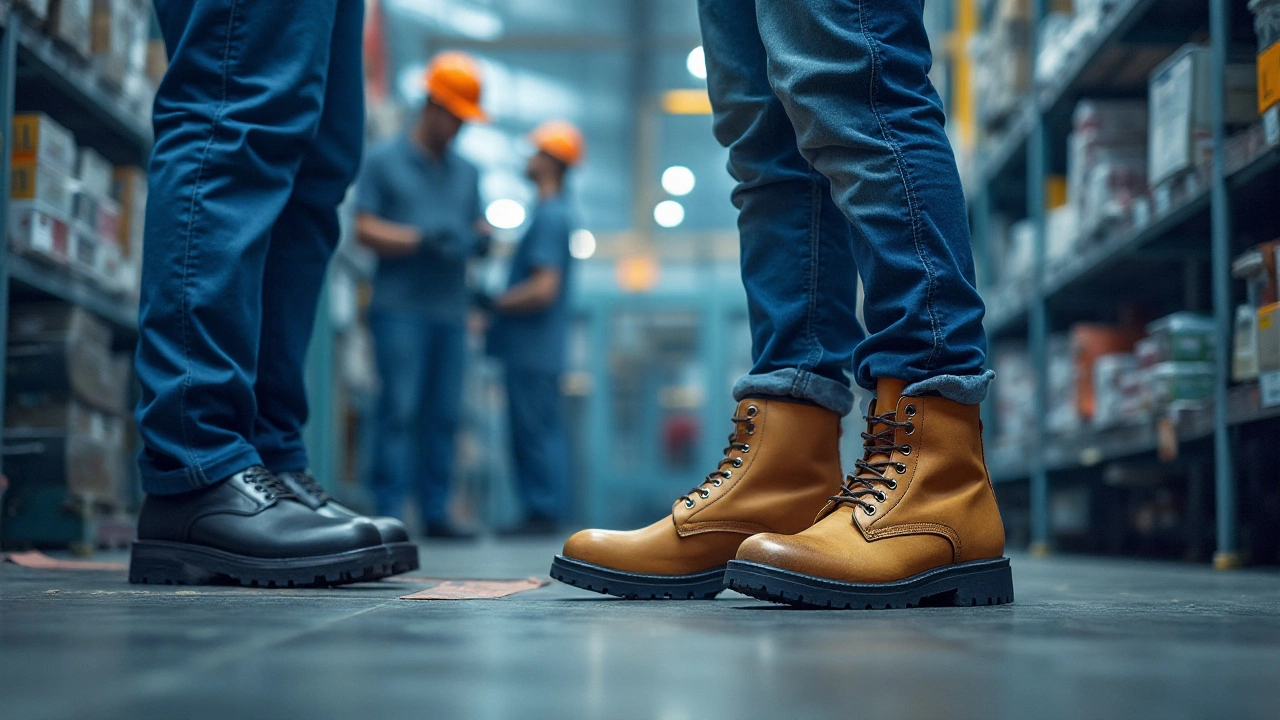Safety Footwear
When talking about safety footwear, protective shoes designed to guard workers' feet from workplace hazards such as falling objects, punctures, and electrical risks. Also known as work shoes, it is a core part of any personal protective equipment, the collection of gear that shields the body from injury on the job. In the UK, health and safety regulations, laws that set minimum standards for protective gear in workplaces explicitly require employers to provide compliant safety footwear when the risk assessment shows a need. This means the moment a job involves heavy tools, hazardous materials, or slippery surfaces, steel toe caps, slip‑resistant soles, or electrical insulation become non‑negotiable.
Choosing the Right Pair for Your Job
The first step is matching the shoe type to the specific risk. Steel toe shoes, footwear with reinforced toe caps that can absorb impact from falling objects are ideal for construction sites and factories handling heavy equipment. If you work around electricity, look for shoes rated for electrical hazard (EH) protection, which prevent current from passing through the foot. For environments with oil or water, a slip‑resistant sole reduces the chance of falls. Employers often cover the cost of these shoes, as outlined in UK law: providing work shoes counts as part of the mandatory PPE package. Knowing the exact hazard classification helps you pick a shoe that meets the required EN or BS standards without overpaying for features you don’t need.
Fit and comfort matter just as much as protection. A shoe that’s too tight can cause blisters, while a loose fit defeats the purpose of the toe cap and may lead to tripping. When trying on safety footwear, make sure you can wiggle your toes comfortably, and walk a few steps to test the heel’s stability. Many brands now offer breathable liners and padded collars, which keep feet dry during long shifts – a small comfort upgrade that can prevent fungal infections. Maintenance is another often‑overlooked piece of the puzzle: regularly inspect the toe cap for cracks, clean the outsole to retain slip resistance, and replace the shoes once the protective components show wear. A well‑maintained pair can last three to five years, depending on usage intensity.
All these considerations tie back to the broader goal of workplace safety. By understanding that safety footwear encompasses steel toe shoes, slip‑resistant soles, and electrical protection, you’re better equipped to comply with regulations and protect your feet. Employers who follow the legal requirement to supply PPE not only avoid penalties but also boost morale by showing they care about employee wellbeing. Below you’ll find articles that dive deeper into specific aspects – from legal duties and cost‑sharing tips to style choices that let you look professional while staying safe. Keep reading to get the actionable insights you need to select, wear, and maintain the right safety footwear for any job.
- Cleo Fairchild
- Feb, 2 2025
- 0 Comments
Understanding OSHA Shoes: Protect Your Feet at Work
OSHA shoes are vital for maintaining safety across various work environments. Designed to meet the Occupational Safety and Health Administration's standards, these shoes provide essential protection against hazards such as slippage, electrical risks, and heavy objects. Offering a blend of comfort and functionality, OSHA footwear is indispensable in minimizing workplace injuries. Learn about the distinct features of these shoes and why they are crucial in ensuring worker safety.
